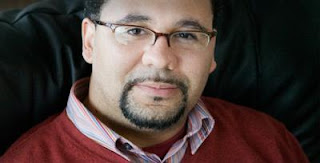The University of Illinois at Chicago has been awarded a $7.2 million federal grant to establish the UIC Center of Excellence in Eliminating Health Disparities.
PODCAST: An extended interview as MP3 audio file
The new center, funded by a five-year grant from the National Center on Minority Health and Health Disparities of the National Institutes of Health, will focus on health disparities in prostate and colorectal cancer, community-based breast cancer initiatives, and training and educating the next generation of health disparities researchers.
"The new center will be a multi-faceted, university-wide resource to integrate health disparities research and activities," said Elizabeth Calhoun, associate professor of health policy and administration at the UIC School of Public Health, and director and principal investigator of the new center.
The center's primary research projects will specifically look at disparities in prostate and colorectal cancer.
Colorectal cancer is the second most common cancer among African-American women and the third most common for African-American men. Late stage diagnosis, method of detection, delays from detection to surgical intervention, and disparities in treatment may all contribute to African Americans having the highest mortality from this disease of any racial or ethnic group, according to researchers.
In one study, led by Garth Rauscher, UIC assistant professor of epidemiology, researchers will enroll 500 African-American patients newly diagnosed with colorectal cancer to obtain information about screening, stage at diagnosis and treatment. The researchers will look at personal barriers such as cultural beliefs about cancer, social support, transportation, housing, literacy, perceived stress, fear, medical trust, as well as access barriers such as insurance status.
A second study, led by Vince Freeman, UIC assistant professor of epidemiology, will compile data on prostate and colorectal cancer cases diagnosed between 1995 and 2008 in Chicago to conduct a population-based analysis of clinical, socioeconomic and health care factors that account for mortality differences between African Americans and Caucasians.
Ultimately, these statistical models will allow researchers to predict hot-spot areas heavily burdened with disease, said Calhoun, and provide effective measures for deploying resources such as targeted cancer screenings.
The center has a research core, a training and education core, and a community engagement core, led by Richard Warnecke, Faye Davis, and Carol Ferrans, respectively, who are researchers at the UIC Institute for Health Research and Policy.
Rauscher and Freeman are researchers at the UIC Institute for Health Research and Policy and the UIC Cancer Center.
The new UIC Center of Excellence in Eliminating Health Disparities will involve faculty from all six of UIC's health sciences colleges, the UIC Institute for Health Research and Policy, the UIC Center for Clinical Translational Science, and the UIC Cancer Center to develop a comprehensive strategy to incorporate research, education, policy changes and community partnerships to reduce health disparities in Chicago and beyond. ###
UIC ranks among the nation's top 50 universities in federal research funding and is Chicago's largest university with 25,000 students, 12,000 faculty and staff, 15 colleges and the state's major public medical center. A hallmark of the campus is the Great Cities Commitment, through which UIC faculty, students and staff engage with community, corporate, foundation and government partners in hundreds of programs to improve the quality of life in metropolitan areas around the world.
For more information about UIC, visit www.uic.edu
Contact: Sherri McGinnis González smcginn@uic.edu 312-996-8277 University of Illinois at Chicago































